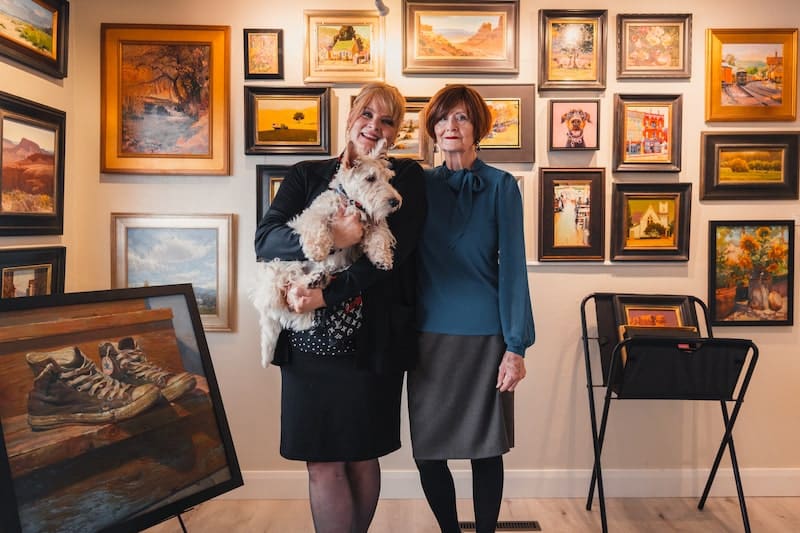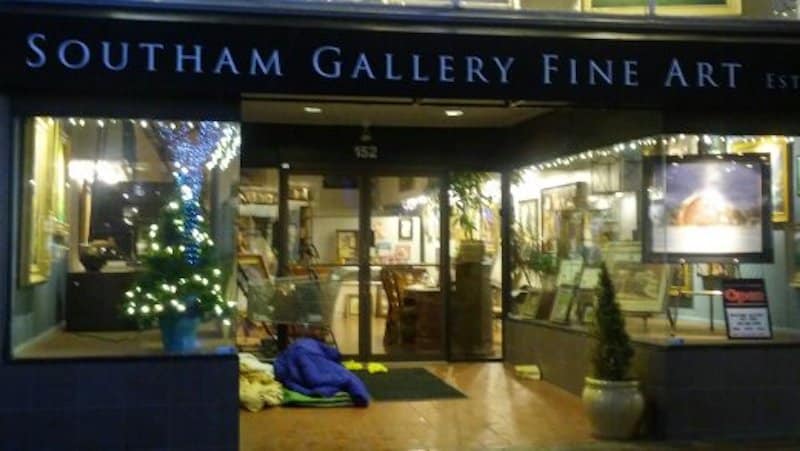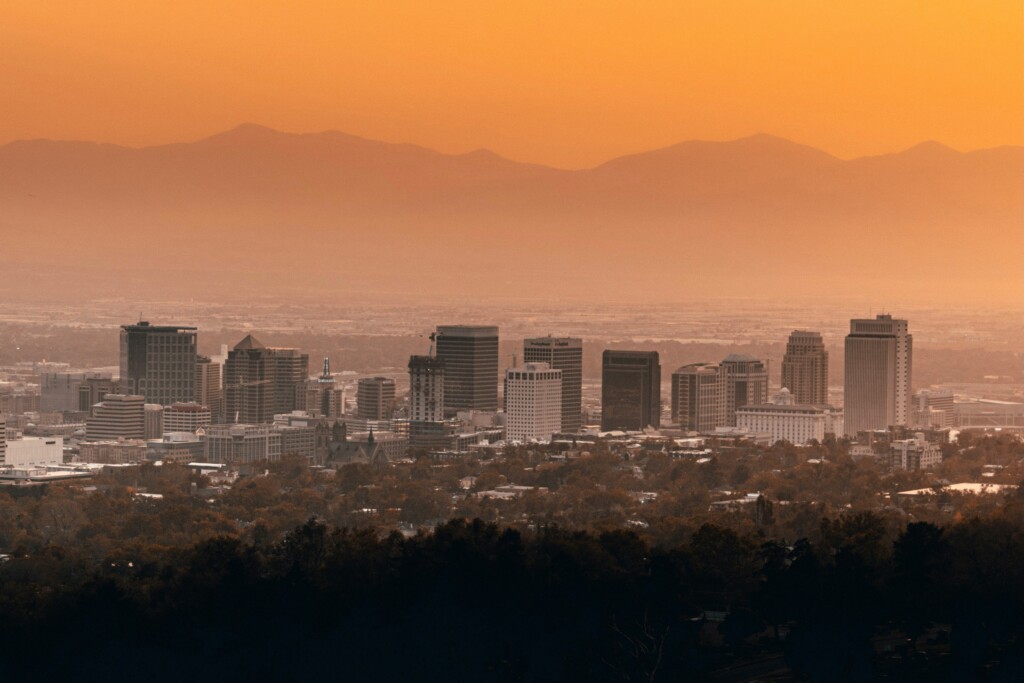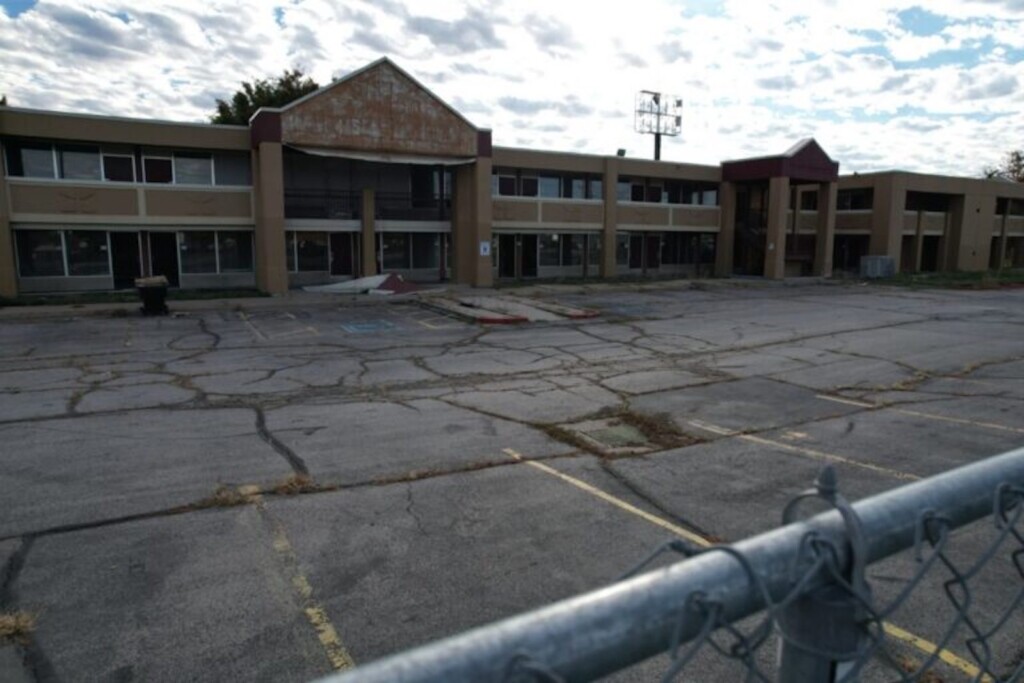
Linda Southam called the police “again” one morning to dislodge a passed-out homeless man who wouldn’t budge from the entrance.
The founder and co-owner of Southam Gallery told the officer, “You need to be a little more mean so they don’t come back.” The officer replied, “Ma’am, I have to do this a hundred times a day. I can’t be mean every time.”
“The police are so taxed and burned out,” said Kimberly Southam, Linda’s daughter and co-owner. The Southams, likewise, were taxed and burned out, and, with no solution in sight, they relocated from a downtown ground-level shop in the shadow of high rises at 152 S Main Street to an old house at 7160 Highland Drive in Cottonwood Heights.
The decision wasn’t easy after 40 years downtown and it won’t land the gallery in the Harvard Business Review. The new store is on a busy street with free parking, but has little foot traffic. Rent is double and sales are halved. Gone are the tourists willing to pay an average $3,000, and as much as $30,000 for a painting of Utah’s landscapes and cityscapes by artists as well-known as Richard Boyer.

Most repeat customers are lost forever, but Kimberly said the gallery had little choice but to join a small-business exodus from near Temple Square that includes Beckett and Robb, Lamar Lisman Studios, Hope Gallery, Weller Book Works,Twisted Roots, and the Italian restaurant, Cinegrill.
Southam’s customers, though fewer in number, don’t have to fend off serial panhandling. The Southams no longer mop human feces and urine from the sidewalk each morning and they are no longer trapped inside at closing time because someone “crazy like” is outside the door, Kimberly said. They no longer are awakened by 2am alarm alerts that uprooted sleep with a 20-mile drive, only to verify that an “unhinged” homeless man had pounded his fist on the shop window.
Some street-level businesses downtown are hanging in, even thriving. “You know, it’s never been too much of a problem for us, and the houseless have been respectful,” said Gabby Nelson, general manager of Eva’s Bakery at 155 S Main.
When she encounters a problem, Nelson said she reaches out to the Downtown Ambassadors, who patrol the streets daily, steering people to shelter, food and other services.
Kimberly Southam said she suspects that the bakery’s customers are professionals in high rises, who hustle there and back. Dwindling, she said, are window shoppers and those going to dinner and a show at the Eccles Theater.
The Central Business District has 54% fewer office workers than in 2019 because many still work remotely, said Dee Brewer, executive director of Downtown Alliance, which manages the ambassadors.
Nevertheless, the “social economy” thrives, Brewer said. Twelve restaurants closed during the pandemic, but 21 have opened in the last 12 months. Brewer had no data on the number of businesses that have left downtown, but he said labor shortages and rising costs are most often cited as reasons.
“Downtown businesses reported a higher incidence of encampments and drug traffic this summer,” but there has been a decline since September due to the ambassadors, policing and the onset of colder weather in the valley, Brewer said.
Warmer weather will return and the homeless problem is “out of control,” said Ken Sanders, owner of Ken Sanders Rare Books that remains downtown. After 26 years, he is considering closing the store at 268 S 200 E to sell strictly online.
“Whoever thought Salt Lake City would have dangerous neighborhoods?” said the 70-year-old Sanders, who said an employee arrived at the bookstore one morning to find a homeless woman at the entrance covered in blood. “I have to deal with these people more days than not. I treat them with respect, but they are drugged out of their minds, or clearly off their meds.”
Downtown business owners said they have empathy for the homeless, but the problem is complex and immune to solutions.
“It makes your heart sick,” said Kimberly Southam, who donated to the St. Vincent de Paul shelter. The homeless deserve compassion, but she grew weary of waiting for progress, and for reciprocal compassion for small downtown businesses. “No one said, ‘We’re sorry you’re leaving.’ It’s like, ‘Oh, who cares? They’re gone.’”
Salt Lake is headed the way of Los Angeles, San Francisco and Portland, Kimberly said, and Main Street has already gone the way of East Broadway, where Southam Gallery leased for 28 years before moving to Main Street 12 years ago. The landlord on East Broadway never found another tenant and vacancy has led to graffiti and blight.
Southam Gallery may not survive in Cottonwood Heights, Kimberly said, but “I love that I don’t have to look out the window and be depressed when I see someone going by with a shopping cart.”
RELATED CONTENT
The Best and Worst of Salt Lake City According to Its Residents
MAIN STREET SALT LAKE: Open Drug Use is Hurting Local Businesses
Will Housing in Utah Ever Become Affordable Again?
A Look at Tenement Housing as Opposed to Government Housing




